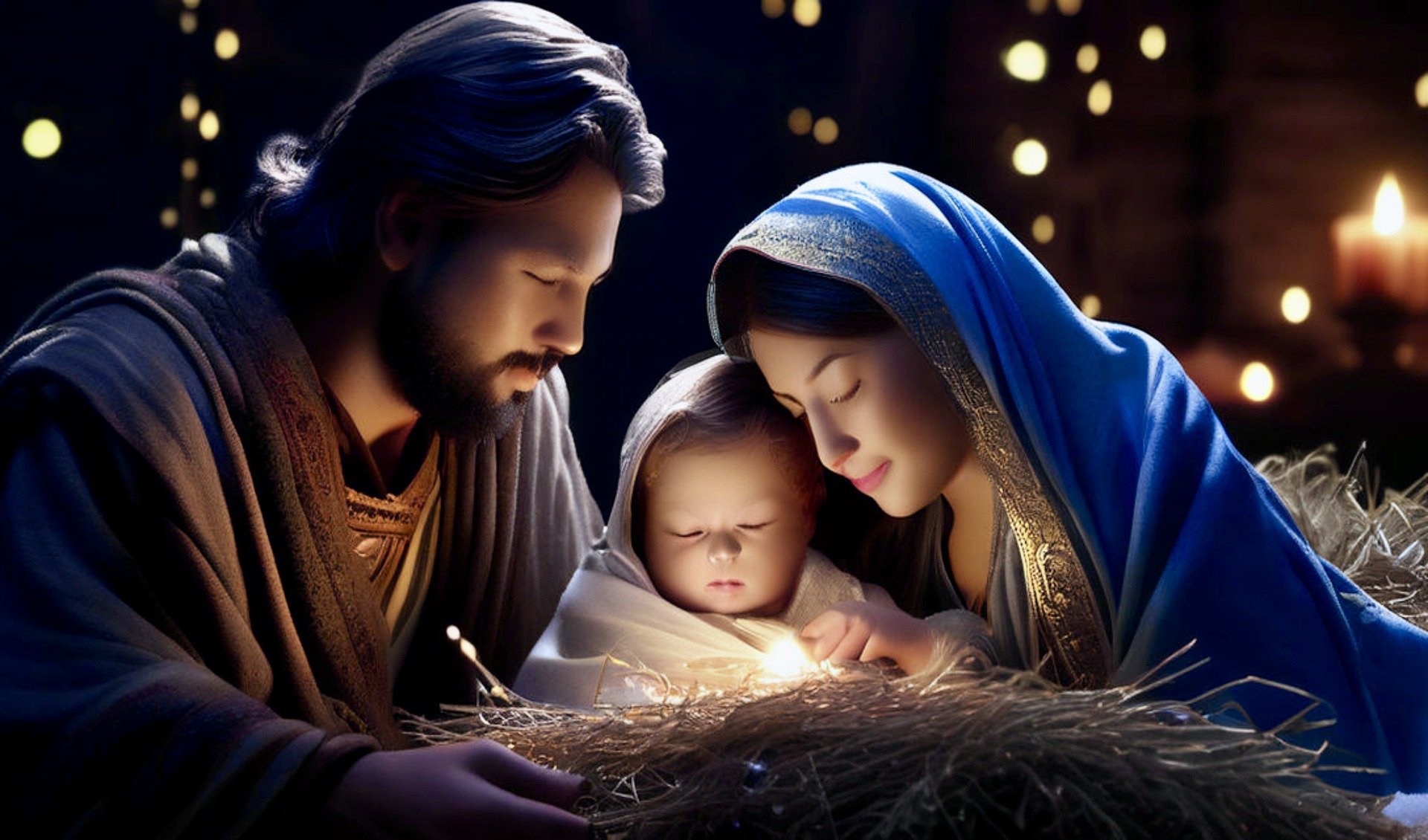Image by Jim Cooper from Pixabay
You’ve likely noticed that Jesus’ birth is celebrated on December 25 in many parts of the world, but this hasn’t always been the case. Early Christians actually focused on Epiphany, not Jesus’ birth, and celebrated it on January 6. The date December 25 emerged in the 4th century, coinciding with existing Pagan origins like the Winter solstice. Eastern Orthodox Christians continued to observe Epiphany on January 6, which they also considered Jesus’ birth. Notably, some Eastern Christian traditions celebrate Epiphany in the spring, often coinciding with the Spring Equinox. As you explore further, you’ll uncover more surprising variations in how Jesus’ birth has been celebrated across cultures and time.
Key Takeaways
- Jesus’ birth has been celebrated on December 25, a date coinciding with existing Pagan origins, such as the Winter solstice.
- In Eastern Orthodox traditions, Jesus’ birth is celebrated on January 6, also known as Epiphany, which marks the beginning of Jesus’ ministry.
- Some Eastern Christian traditions celebrate Epiphany in the spring, often coinciding with the Spring Equinox.
- In some European countries, such as Spain and Italy, Christmas is celebrated on January 6, which is also Epiphany.
- In Egypt, Jesus’ birth is celebrated on January 7, with midnight mass being a key part of the celebrations.
Early Christian Practices
As you explore the history of Christmas, you’ll discover that early Christian practices surrounding Jesus’ birth celebration were vastly different from the festivities you’re familiar with today.
In the early Christian era, Jesus’ birth wasn’t a major event; instead, Christians focused on Epiphany, which commemorated the visit of the Magi to the baby Jesus. Christian rituals, like Baptismal ceremonies, were more significant than Jesus’ birthday.
In fact, early Christians celebrated Jesus’ Baptism, not his birth, as a major event.
You’ll find that early Christian practices revolved around the Epiphany, observed on January 6. This date marked the beginning of the Jesus’ ministry, and Christians saw it as a symbol of Jesus’ revelation to the world.
The early Christian church didn’t prioritize Jesus’ birth as a separate event, and it wasn’t until later centuries that Christmas gained prominence.
As you dig deeper, you’ll realize that the early Christian focus on Epiphany and Baptismal ceremonies laid the groundwork for the evolution of Christmas celebrations.
The Rise of December 25
You’ll start to notice a shift in the Christian calendar when you explore the 4th century, a time when December 25 began to emerge as a significant date in the celebration of Jesus’ birth.
This date’s rise to prominence is often attributed to its coincidence with existing Pagan origins. The Winter solstice, which typically falls on December 21 or 22 in the Northern Hemisphere, was already a significant festival in many ancient cultures.
Early Christians likely saw an opportunity to co-opt this existing celebrations and infuse them with Christian meaning.
As Christianity spread throughout Europe, December 25 became more widely accepted as Jesus’ birthday.
You’ll find that this date was particularly popular in the Western Roman Empire, where Christmas was first recognized as a public holiday in 336 AD.
The Eastern Roman Empire, on the other hand, continued to celebrate Jesus’ birth on January 6, a date still observed by some Eastern Orthodox traditions today.
Despite its Pagan origins, December 25 eventually became an integral part of Christian tradition, and its popularity has endured to this day.
Eastern Orthodox Traditions
As you explore the world of Eastern Orthodox traditions, you’ll discover a unique approach to celebrating Jesus’ birth.
While the Western Roman Empire adopted December 25 as Jesus’ birthday, Eastern Orthodox Christians continued to observe Epiphany, a festival commemorating the Magi’s visit, on January 6, which they also considered the day of Jesus’ birth.
This divergence in dates highlights the Eastern Orthodox Church’s distinct identity and practices.
In Eastern Orthodox traditions, the preparation for Jesus’ birth is deeply intertwined with Lenten Fasting, a period of spiritual reflection and abstinence.
This 40-day fast, preceding Christmas, emphasizes the significance of Jesus’ birth in the context of his life, death, and resurrection.
Iconography also plays a crucial role in Eastern Orthodox celebrations, with intricate icons depicting the Nativity scene, the Magi, and other biblical figures.
The Iconography Significance lies in its ability to convey the theological and mystical aspects of Jesus’ birth, making the celebration a deeply spiritual and visual experience.
As you venture into Eastern Orthodox traditions, you’ll uncover a rich tapestry of rituals, symbolism, and meanings that add depth and complexity to the celebration of Jesus’ birth.
Ancient Roman Influences
The ancient Roman festival of Sol Invictus, celebrated on December 25, influenced the Western Christian tradition of commemorating Jesus’ birth on this day. You might wonder why this is the case. It’s because the early Christian church leaders sought to co-opt existing pagan festivals and traditions to make Christianity more relatable and appealing to the masses.
The Roman Empire’s Imperial Politics played a significant role in spreading Christianity throughout Europe, and the festival of Sol Invictus was an integral part of Roman culture. The early Christian church leaders saw an opportunity to supplant the pagan festivals with Christian celebrations, making it easier for people to shift to Christianity.
The festival of Sol Invictus was a celebration of the winter solstice, marking the longest night of the year, and the early Christians saw parallels with Jesus being the ‘light of the world.’ By adopting December 25 as Jesus’ birthday, the early Christian church leaders effectively merged Christian and pagan traditions, creating a unique cultural identity.
The influence of ancient Roman festivals on the Western Christian tradition is undeniable, and it’s fascinating to explore how these historical events have shaped the way we celebrate Jesus’ birth today.
Celebrating in the Spring
As you explore the history of Jesus’ birth celebrations, you’ll discover that some Eastern Christian traditions have a unique approach.
In some Eastern Christian traditions, Epiphany, also known as Three Kings’ Day, takes center stage in the spring, commemorating Jesus’ baptism and the visit of the Magi. This celebration often coincides with the Spring Equinox, a time when nature awakens from its winter slumber.
It’s no coincidence that this timing aligns with ancient pagan festivals, which also marked the equinox. The early Christian church incorporated these pagan roots into their celebrations, blending traditions to create a new narrative.
You might wonder why Jesus’ birth isn’t the primary focus during this time.
Instead, the spotlight falls on the Epiphany, which symbolizes the revelation of Jesus as the son of God. By celebrating in the spring, these Eastern Christian traditions emphasize the significance of Jesus’ baptism and the recognition of his divinity by the Magi.
As you dig deeper into the history of Jesus’ birth celebrations, you’ll find that this unique approach is just one example of the diverse ways that Christians have honored this pivotal event.
The January 6 Tradition
You’ll find that in many Western Christian traditions, Jesus’ birth is celebrated on December 25, but in some countries, the main event happens on January 6, a day that’s deeply rooted in history. This alternative date is closely tied to the Epiphany significance, which commemorates the visit of the Magi to the baby Jesus.
The early Christian church used ancient calendars, such as the Julian calendar, which placed Jesus’ birth on January 6.
In Orthodox and Eastern Christian traditions, January 6 is still celebrated as Jesus’ birthday.
In some European countries like Spain and Italy, January 6 is known as ‘Día de Reyes‘ (Kings’ Day), and it’s a national holiday.
In many countries that celebrate on January 6, gift-giving is a significant part of the tradition, symbolizing the gifts brought by the Magi.
This January 6 tradition highlights the diversity of Jesus’ birth celebrations across different cultures and calendars.
Variations Across Cultures
As you explore the diverse ways Jesus’ birth has been celebrated, you’ll discover that cultural traditions surrounding this event vary substantially, reflecting local customs, historical events, and religious practices that have evolved over time.
You’ll find that different cultures have adapted Christmas to fit their unique contexts.
In Africa, for instance, you’ll encounter African Adaptations that blend Christian traditions with indigenous practices. In Ethiopia, Christmas is celebrated on January 7, and is preceded by a day of fasting. In Ghana, the festivities are accompanied by traditional drumming and dancing. Meanwhile, in Egypt, Christmas is celebrated on January 7, and is marked by a midnight mass.
In Asia, you’ll come across Asian Interpretations that are distinct from their Western counterparts. In Japan, Christmas isn’t a national holiday, but it’s become popular in recent years, with many people exchanging gifts and eating Christmas cake. In India, Christians often decorate their homes with stars, angels, and Christmas trees, blending Christian and Hindu traditions.
As you explore these variations, you’ll gain a deeper appreciation for the diverse ways Jesus’ birth has been celebrated across cultures.
Conclusion
As you reflect on the diverse dates of Jesus’ birth celebrations, imagine a tapestry woven with threads of ancient traditions, cultural influences, and Christian practices.
Coincidentally, the stars align to reveal a fascinating narrative – December 25, January 6, and even springtime festivities, each a unique stitch in the rich fabric of Christianity.
As you ponder the significance of Jesus’ birth, the varied dates become a declaration to the enduring spirit of faith, shining bright like a beacon in the night sky.


